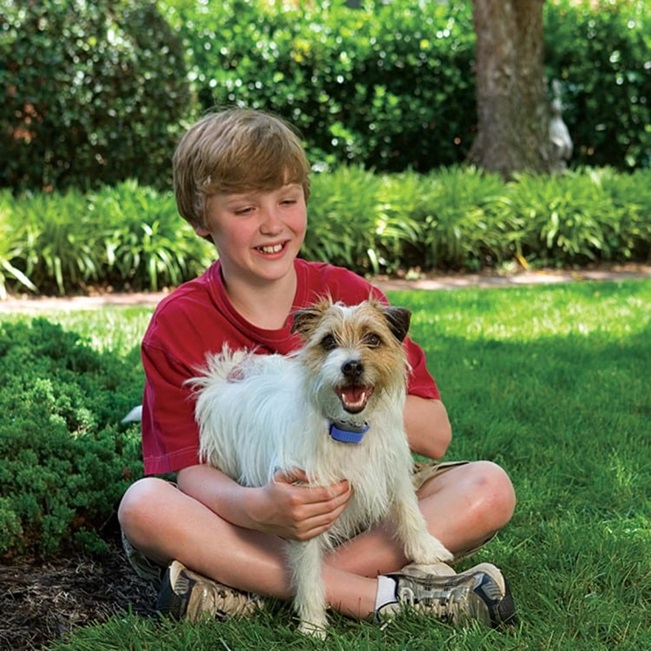Does your pouch get too excited too often? Is he barking at every noise? While barking is completely normal for dogs, when it gets excessive it can be an issue, especially if it bothers your neighbours. To manage these situations, a lot of dog owners turn to spray collars. These bark-control devices use a spray mechanism to release a burst of citronella or unscented mist when a dog barks, aiming to interrupt the barking behaviour. We’ll explore the working mechanism, effectiveness, benefits and potential drawbacks, so you can decide if this is the right solution for your dog.
What Are Bark Spray Collars?

Bark spray collars are devices worn around a dog’s neck, designed to deter barking by emitting citronella or a similar substance when the dog barks. The unexpected spritz startles the dog, disrupting the barking pattern and discouraging further barking. Unlike shock collars, these devices are considered a more humane option as they do not inflict pain but rely on surprise and distraction.
How Do Citronella Bark Collars Work?
Citronella dog collars typically have a microphone that detects the sound of barking and triggers the spray mechanism. When the dog barks, the microphone picks up the sound and activates the release of a mist towards the dog’s nose. The sudden mist, combined with the smell of citronella, distracts the dog, making it associate barking with the unpleasant experience.
Are They Effective?
The effectiveness of these collars can vary depending on the individual dog and the underlying cause of the barking. For many dogs, the unexpected spray is enough to reduce or eliminate excessive barking. However, some dogs may become accustomed to the smell or may not be deterred by it at all. Consistency in use and pairing the collar with positive reinforcement training can enhance effectiveness.
How to Choose
The key to achieving good results is the right selection of the collar. Since they come in different sizes and types, it’s important to choose the appropriate bark spray collar for your dog. Consider the following:
Size and Fit
Ensure the collar is adjustable and fits snugly but comfortably around your dog’s neck. A collar that is too tight can cause discomfort, while one that is too loose may not activate properly. Many manufacturers provide guidelines on suitable collar sizes based on dog breeds or weights.
Sensitivity Levels
Some collars offer adjustable sensitivity settings, allowing you to customize how much barking is required to trigger the spray. This feature can be useful for dogs with varying barking patterns.
Spray Type
Citronella is the most commonly used spray because it is non-toxic and has a scent that dogs generally find unpleasant. Some collars use unscented sprays, which can be beneficial for dogs sensitive to scents or if citronella is not effective.
Durability and Water Resistance
Look for collars made from durable materials that can withstand your dog’s activities. Water-resistant models are essential for dogs that spend time outdoors or in wet conditions. Consider the battery type and life span of the devices. Rechargeable batteries are more environmentally friendly and cost-effective in the long run compared to disposable batteries.
Benefits of Using Spray Collars

• Humane Approach: Bark spray collars are generally considered more humane than shock collars as they do not cause pain.
• Ease of Use: These collars are simple to use and can be easily adjusted to fit different sizes of dogs.
• Quick Results: Many dog owners report seeing a reduction in barking within a short period of using the device.
• Positive Training Aid: When combined with other training methods, the collars can be part of an effective behaviour modification strategy.
Potential Drawbacks
• Variable Effectiveness: Not all dogs respond to bark spray collars, especially those with high tolerance or those that bark due to anxiety or other behavioural issues.
• Refill Requirement: The canisters need to be refilled regularly, which can be an ongoing cost.
• Environmental Sensitivity: The collars may be triggered by other loud noises, leading to unnecessary sprays and potential confusion for the dog.
• Temporary Solution: While effective for some, bark spray collars may not address the root cause of the barking, requiring additional training and behaviour modification.
Considerations When Using Spray Collars
When deciding whether a spray collar is right for your dog, consider the following:
- Identify the Cause of Barking: Understanding why your dog barks excessively is crucial. If the barking is due to separation anxiety, fear, or medical issues, addressing the underlying cause is more effective than relying solely on a bark spray collar
- Consult a Professional: Before using such a device, consult with a veterinarian or a professional dog trainer. They can provide guidance on whether a bark spray collar is suitable for your dog and how to use it effectively
- Monitor Your Dog’s Reaction: Observe your dog’s response. If the dog shows signs of distress or fear, discontinue use and seek alternative training methods
- Use as Part of a Training Program: The collars are most effective when used in conjunction with positive reinforcement training. Reward your dog for quiet behaviour to reinforce the desired outcome.
- Choose the Right Collar: Ensure the device fits properly and choose a product with good reviews. Some models offer adjustable spray levels, which can be helpful in customising the response to your dog’s needs.
Wrapping Up
Spray collars can be a useful tool for managing excessive barking in dogs. They offer a humane alternative to shock collars and can be effective for many dogs when used correctly. However, they are not a one-size-fits-all solution and should be part of a broader training and behaviour modification program. Understanding your dog’s specific needs and seeking professional advice can help ensure the best outcomes.
























